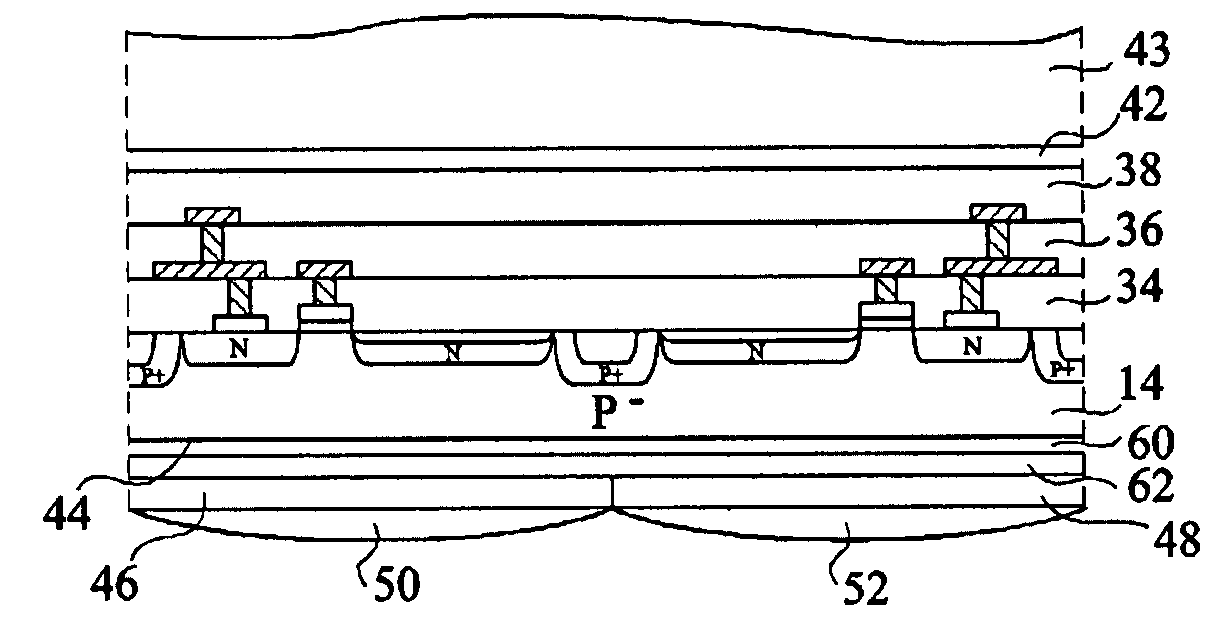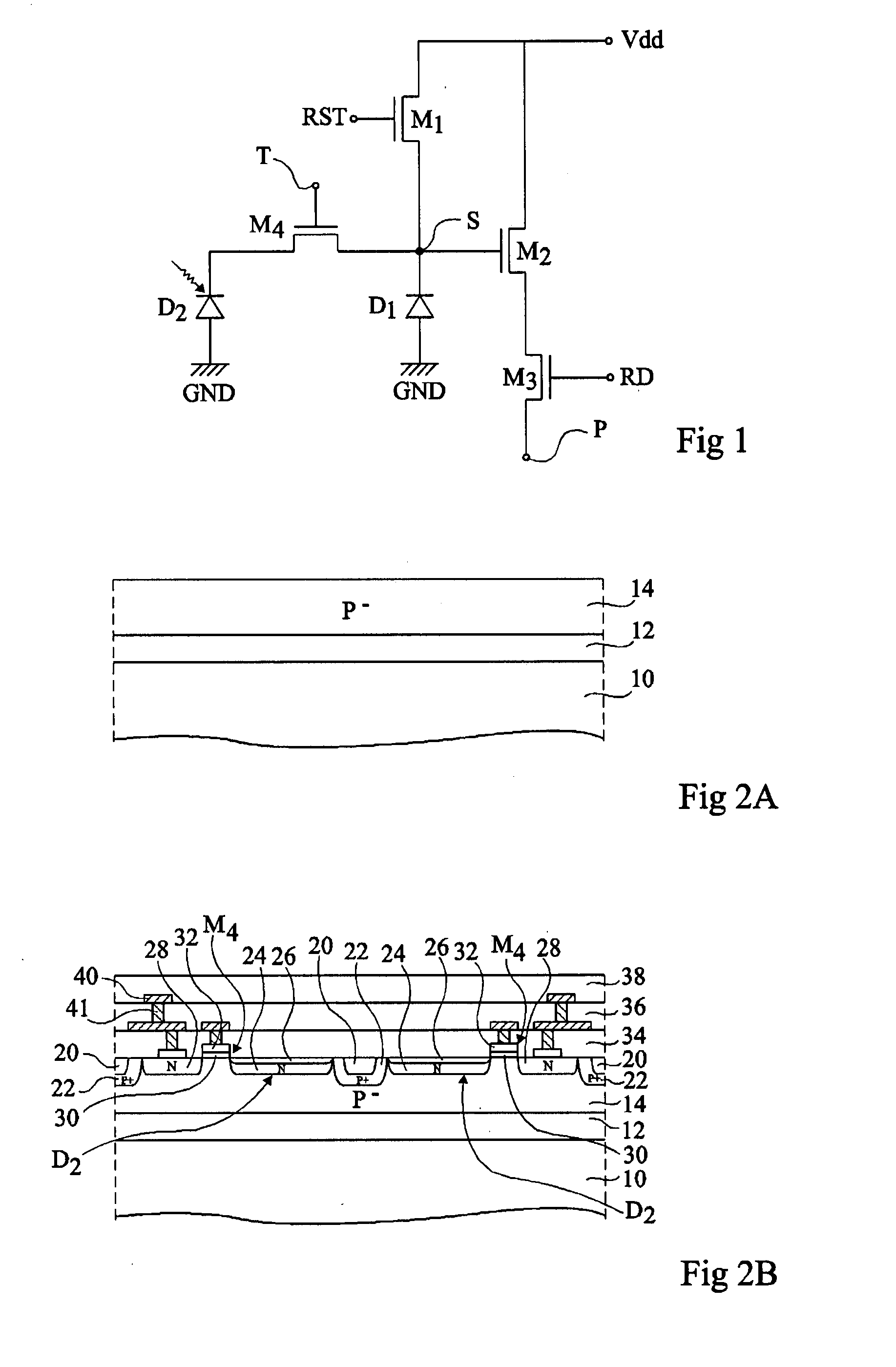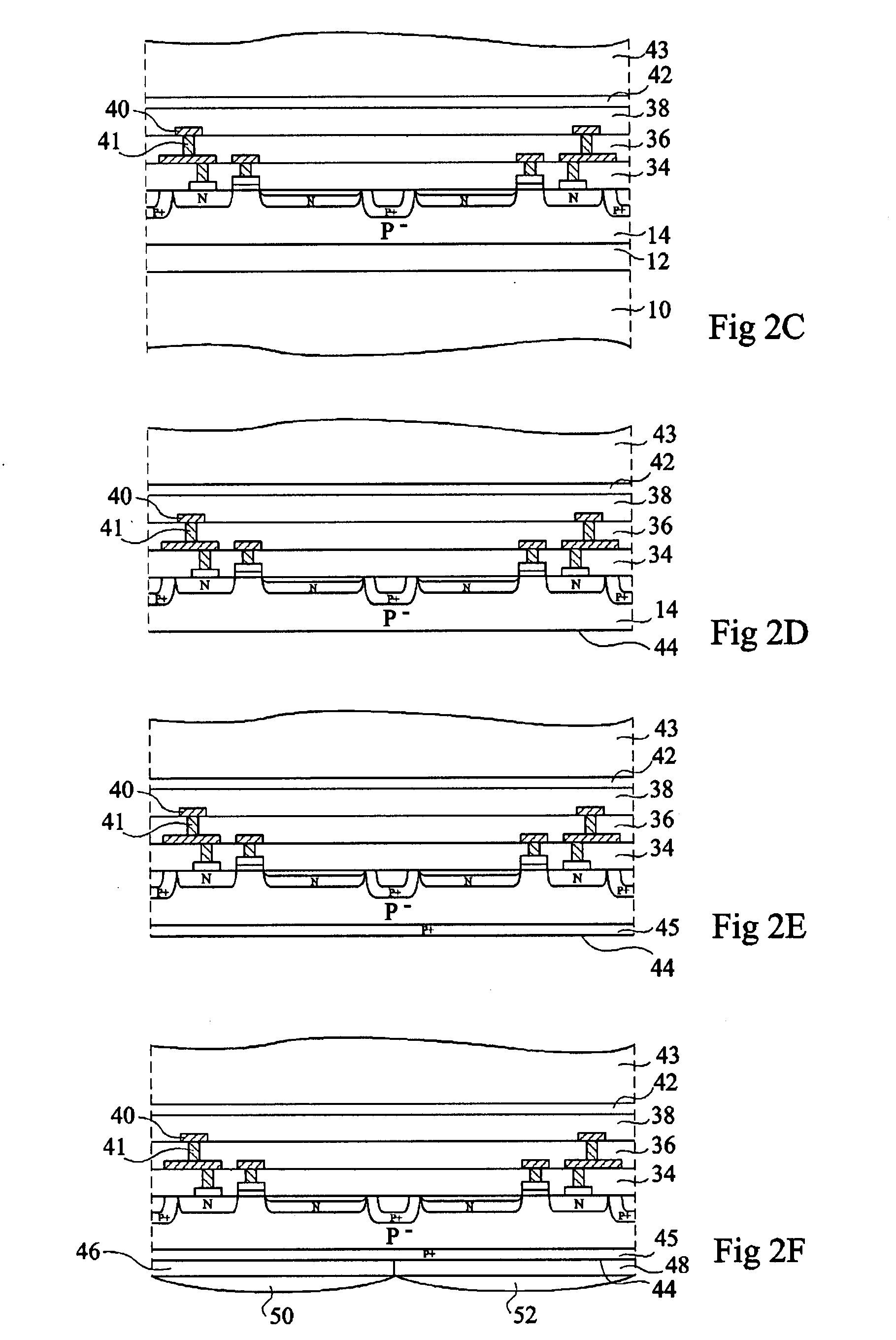Back-lit image sensor
a back-lit image sensor and image sensor technology, applied in the field of image sensors, can solve the problems of disturbance of the signals read from the read nodes of the photosensitive cells, difficulty in formation, and difficulty in forming image sensors, so as to reduce or even eliminate the disturbance of dark currents
- Summary
- Abstract
- Description
- Claims
- Application Information
AI Technical Summary
Benefits of technology
Problems solved by technology
Method used
Image
Examples
Embodiment Construction
[0043]For clarity, the same elements have been designated with the same reference numerals in the different drawings and, further, as usual in the representation of integrated circuits, the various drawings are not to scale.
[0044]An example of a method for manufacturing an image sensor or photodetector according to the present invention will now be described. As an example, it is started from a structure of silicon-on-insulator type such as shown in FIG. 2A.
[0045]FIG. 3A is a drawing similar to FIG. 2B and shows the structure obtained after having formed the photosensitive cell components, the stack of insulating layers 34, 36, 38, metal tracks 40, and metal vias 41. The next steps of the example of the method according to the present invention correspond to the steps of the conventional method for manufacturing of an image sensor previously described in relation with FIG. 2C.
[0046]FIGS. 3B and 3C illustrate the last steps of the example of a manufacturing method according to at lea...
PUM
 Login to View More
Login to View More Abstract
Description
Claims
Application Information
 Login to View More
Login to View More - R&D
- Intellectual Property
- Life Sciences
- Materials
- Tech Scout
- Unparalleled Data Quality
- Higher Quality Content
- 60% Fewer Hallucinations
Browse by: Latest US Patents, China's latest patents, Technical Efficacy Thesaurus, Application Domain, Technology Topic, Popular Technical Reports.
© 2025 PatSnap. All rights reserved.Legal|Privacy policy|Modern Slavery Act Transparency Statement|Sitemap|About US| Contact US: help@patsnap.com



